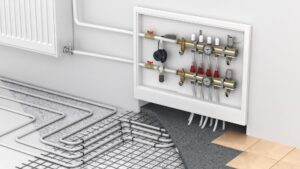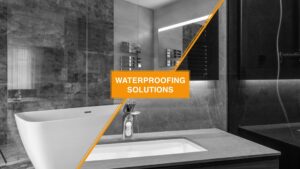This month, Jim Percival, technical director at Palace Chemicals, sets out how you should look after your tiled surface after it has been installed. Fit and forget is not a good policy when it comes to tiling.
Anyone who thinks that, once your tiles are in place and the grout is dry, the job is done, is sadly mistaken. A lot depends on the type of tiles, but there is work to do on a completed tiling job, in order to protect its aesthetics, the hygiene of the installation and in some cases the tiles themselves.
While people tend to think that tiles are impervious, this is in fact not correct in many cases there are surfaces of tile & stone that are to some degree semi-porous and are in fact covered in microscopic pores, making them more susceptible to water penetration or the trapping of dirt, which will quickly make them look stained.
To reduce the risk of staining, porous and semi-porous tiles should always be sealed. Tile sealers create an invisible and protective layer over the surface, stopping liquids and grime from penetrating into the surface of the tile. This ensures a long-lasting and beautiful finish. However it is not just an issue of aesthetics, but also one of hygiene, so it is particularly important to pay attention to correct sealing in kitchens and food preparation areas and washrooms.
Irrespective of the type of tiles, grout joint surfaces should ideally be sealed to preserve their durability & colour retention. Most grout types are only water-resistant, so the tile joint surfaces will benefit from sealing to prevent the ingress of moisture and dirt which will cause staining, discolouration and potentially hygiene issues as well, especially in kitchen or washroom areas.
For this purpose an impregnating sealer for tile and stone can be used. The use of an impregnating sealer will also help prevent efflorescence which can be caused by repeated
exposure to intermittent wet to dry cycles and, in external locations, weather or other external sources. A sealer will protect the semi-porous tile mortar joint from moisture ingress and consequential contaminant absorption.
In addition to sealing, a good cleaning regime is also important, for both tiles and grout, particularly with regard to the initial clean after installation. A poor initial clean and subsequent accumulation of dirt can create maintenance issues.
This applies to both ceramic and porcelain tiles. Ceramic tiles are usually non-absorbent and although they are resistant to water and many staining agents, marks can still appear, which can be reduced if the right cleaning products are used according to the manufacturer’s recommendations.
Spots and stains can appear on new porcelain floor tiles as well. Sometimes, footprints will also cause staining and can be hard to remove. To avoid this, a thorough clean immediately after installation is essential, as it is important to remove grout residue from the tile face, which if left unattended even in small blooms can encourage dirt pick-up. It is also important to bear in mind that a completely different type of cleaner will be required to remove an epoxy grout residue than would be the case for a cement based grout.
There are a few do’s and dont’s associated with cleaning, in addition to stressing the importance of the good initial clean. Use a pH neutral, acid-free cleaner to remove grout film from the surface of tile or natural stone known to be acid sensitive. This will be non-hazardous, safe to use and will not damage the tiles.
External tiled spaces should receive particular attention, as they are susceptible to a number of issues which can cause problems. These include: the growth of algae, which as well as being unsightly, can make surfaces slippery and unsightly; deterioration caused by weathering – for example rain, snow, UV, large temperature fluctuations; efflorescence; stains such as rust, oil, grease, or water stains, can accumulate on patios and walls, affecting their appearance.
In external locations using the most appropriate cleaning products is crucial, whether working with natural stone or contemporary porcelain tiles and these should ideally be effective in removing organic growths such as mould or mildew. Shortcuts risk leaving the surface inadequately cleaned. After completing the cleaning process, the next important step involves applying a sealant, especially when working with porous surfaces such as natural stone and pre-cast slabs. Here the choice of surface sealant should be based on a product which is clearly recommended for the tile, stone and surface types concerned, and be aware that a repeat application every few years will be necessary to ensure the preservation of the tiled surface.





